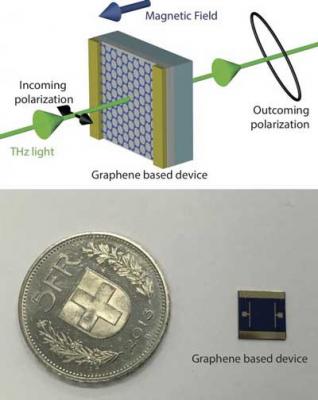

| Online: | |
| Visits: | |
| Stories: |

| Story Views | |
| Now: | |
| Last Hour: | |
| Last 24 Hours: | |
| Total: | |
Graphene may grant control over terahertz waves
Researchers from the University of Geneva, working with the Federal Polytechnic School in Zurich (ETHZ) and two Spanish research teams, have come up with a technique based on the use of graphene that allows for terahertz waves to be controlled accurately. This discovery paves the way for a practical use of terahertz waves, in particular for imaging and telecommunications.

Terahertz waves allow for the detection of materials that are undetectable at other frequencies, but the use of these waves is limited by the absence of suitable devices and materials allowing to control them. The team developed a technique in which graphene allows for the potentially very quick control of both the intensity and the polarization of terahertz light. “The interaction between terahertz radiation and the electrons in graphene is very strong and we have therefore come to the hypothesis that it should be possible to use graphene to manage terahertz waves,” the team explains.
Source: http://www.graphene-info.com/graphene-may-grant-control-over-terahertz-waves


